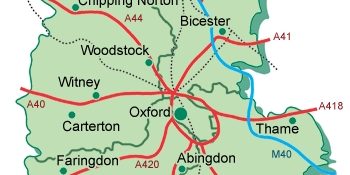The Oxfordshire Plan 2050

Last modified:
16th August 2022
The Oxfordshire Plan 2050 was cancelled in August 2022.
As we understand, local councils were unable to reach agreement on housing numbers. A disappointing outcome as a county-wide strategic plan for Oxfordshire could have ensured the right development in the right place. CPRE Oxfordshire looks forward to working closely with the five District Authorities in order to get the best possible outcome for the Oxfordshire countryside.
Oxfordshire Plan 2050 – what it could have looked like
Oxfordshire’s six local councils (4 districts, the city and county) have all agreed to work together to produce a Joint Statutory Spatial Plan (JSSP), called the Oxfordshire Plan 2050.
It is intended to sit above the District and City Local Plans, looking at strategic development across the area.
In recent years there has been no assessment of the cumulative environmental and social impacts of development. This, combined with a relaxation of planning rules, has led to a wave of speculative development which has put our landscape and rural communities at risk. The Oxfordshire Plan is a positive step towards a more strategic and coherent approach to identifying and guiding appropriate development.
It will be one of the first Plans of this kind to come forward across England, so the pressure is on to make sure it takes adequate account of our natural environment. It will need strong engagement from all those with knowledge of, and passion for, Oxfordshire’s environment to make sure that the Plan is underpinned by good environmental information that can lead to robust decision making.
Oxfordshire’s rural character is at the heart of its environmental, economic and social well-being. This is the fundamental starting point from which decisions about the future development of the county should be made.
What would a good plan look like?
At CPRE Oxfordshire we have been giving some thought to what we believe the Plan should cover. Our vision for how it should deliver the right development in the right place is set out in the principles below.
Local people must be in the driving seat, it is their needs that should take priority.
Housing numbers should be based on the Government’s household projections, which already allow for the natural growth of the existing population and a share of migration. Arbitrary increases to reflect entirely notional and unwarranted growth targets are not acceptable.
Genuinely affordable housing, available in perpetuity, is the critical need.
There should be a clear hierachy for locating development, putting urban, brownfield sites first. At the other end of the spectrum are our three Areas of Outstanding Natural Beauty and the Oxford Green Belt, where development should only take place under genuinely exceptional circumstances.
The Oxford Green Belt’s role as a constraint for development is more vital today than ever, helping to protect the setting and character of the city, which is fundamentally unsuitable to be a large-scale metropolis.
Outside designated areas, organic growth proportional to existing settlements is acceptable, provided that it is supported by adequate and timely infrastructure, including sustainable transport, and landscape impacts are minimised or mitigated.
New settlements may well play a role in the future, but they must be sustainably located and of sufficient size to be self sustaining, without overwhelming existing settlements.
High quality, well-designed development is vital if we are to add to Oxfordshire’s heritage and character, not dismantle it.
Higher density development generates more sustainable communities and encourages developers to build smaller, more affordable properties rather than large-scale executive homes for commuters. A target density of 70 dwellings per hectare should be introduced.
It is vital that our rural county should be protected not just for its own sake but also for its economic value in attracting high quality businesses. The starting point for jobs should be the natural growth in Oxfordshire’s population for which employment might be needed, with the focus then on identifying the right jobs in the right place in order to reduce unsustainable commuting. This is the reverse of current proposals which seek to maximise jobs and then look at what might be needed to support them, including facilitating a dramatic increase in long-distance commuting.
Agriculture is a critical industry for Oxfordshire and deserves a greater priority in considering plans and resources for the county.
Our natural resources and biodiversity are currently in decline and the JSSP must outline how it will reverse this, especially when making decisions on further development. CPRE Oxon welcome the Government’s recent commitment to the ‘environmental net gain’ principle for development. Vital issues such as landscape, tranquility and dark skies must form part of these considerations.
Two thirds of our carbon dioxide emissions are from housing and transport. The JSSP must address this climate change challenge, in terms of the level, location and type of development that it proposes.
Oxfordshire’s cultural capital should be recognised, protected and enhanced, including its archaeological sites, historic buildings and the historic character of the landscape.
Read CPRE Oxfordshire’s consultation responses, from 2019 onwards, within the Resources section on the website.
